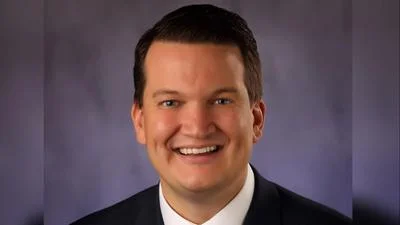David Harris Director the Illinois Department of Revenue | Official Website
David Harris Director the Illinois Department of Revenue | Official Website
Whiteside County has received a tentative property assessment equalization factor of 1.0000 for 2025, according to David Harris, director of the Illinois Department of Revenue (IDOR).
The property assessment equalization factor, or "multiplier," is used to ensure that property assessments are uniform across Illinois counties. This process is required by law and is especially important because many of the state’s local taxing districts, such as school and fire protection districts, span more than one county. Without equalization, taxpayers with similar properties in different counties could face unequal tax burdens.
Illinois law requires that most property be assessed at one-third of its market value. Farm homesites and dwellings follow the standard assessment and equalization rules, while farmland and farm buildings are assessed based on productivity.
The annual equalization factor for each county is determined by comparing the sales prices of properties over the past three years to their assessed values as set by local officials. When the three-year average assessment matches one-third of market value, the multiplier is set at 1.0000. If assessments average above or below this threshold, the multiplier adjusts accordingly.
For Whiteside County, assessments are currently at 33.12% of market value based on sales from 2022 to 2024. The new tentative multiplier will apply to taxes for 2025, payable in 2026. Last year’s multiplier was also 1.0000.
The tentative factor may change if the County Board of Review takes significant action on assessments or if new data is presented that challenges IDOR’s estimates. A public hearing will be held between 20 and 30 days after the tentative multiplier is published in a county newspaper.
A change in the equalization factor does not automatically alter total property tax bills. Tax bills depend on how much money local taxing bodies request each year to provide services; if these requests do not increase from the previous year, total taxes will not rise even if property assessments do.
David Harris stated: "The property assessment equalization factor, often called the 'multiplier,' is the method used to achieve uniform property assessments among counties, as required by law. This equalization is particularly important because some of the state's 6,600 local taxing districts overlap into two or more counties (e.g., school districts, junior college districts, fire protection districts). If there was no equalization among counties, substantial inequities among taxpayers with comparable properties would result."
He added: "A change in the equalization factor does not mean total property tax bills will increase or decrease. Tax bills are determined by local taxing bodies when they request money each year to provide services to local citizens. If the amount requested by local taxing districts is not greater than the amount received in the previous year, then total property taxes will not increase even if assessments may have increased."
The assessed value of a specific property determines an individual taxpayer's share of the overall tax burden; this share is not affected by changes in the multiplier.




 Alerts Sign-up
Alerts Sign-up